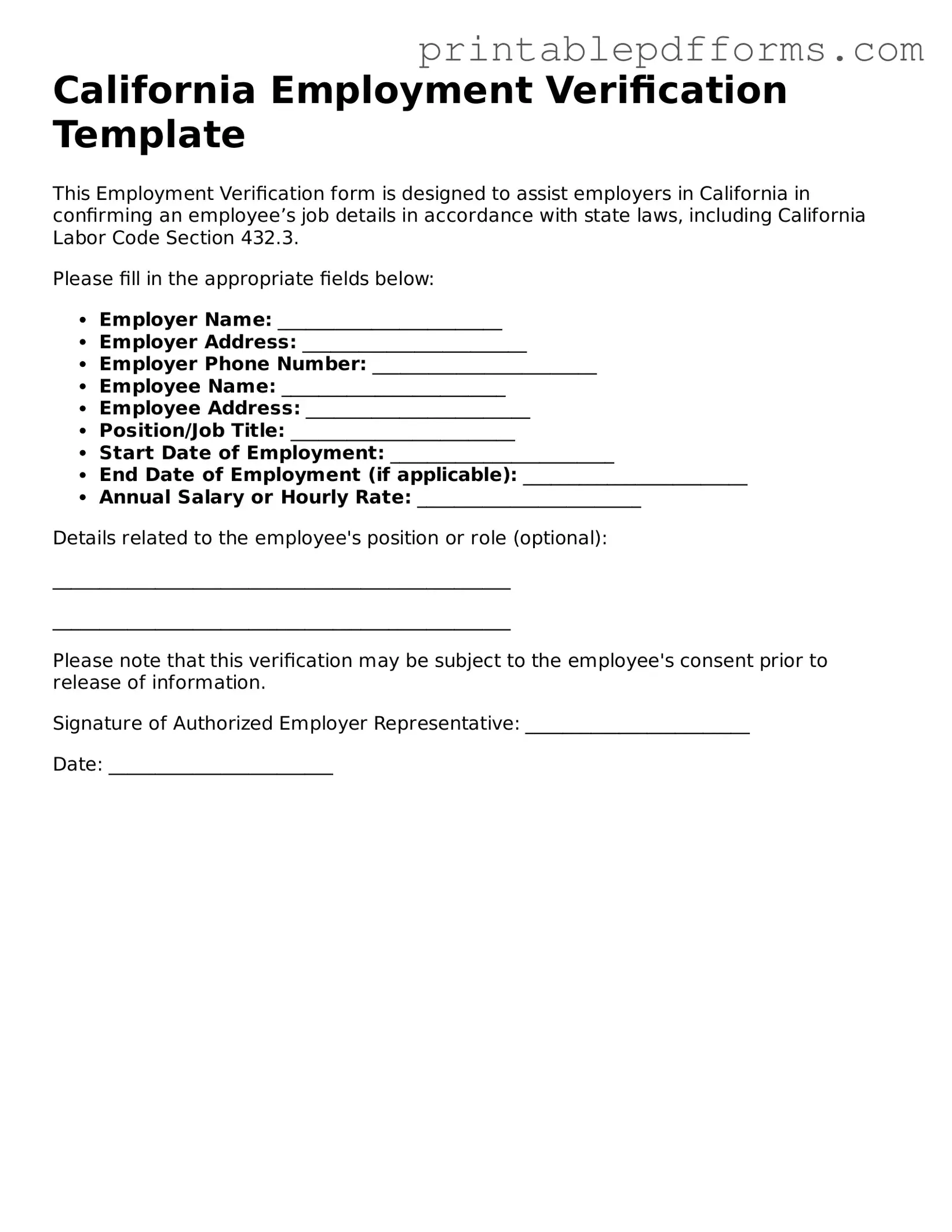The California Employment Verification form is a document used by employers to confirm an employee's work history, including dates of employment, job title, and salary information. This form is often required for various purposes, such as applying for loans, renting an apartment, or verifying eligibility for benefits.
Typically, the form is filled out by employers. However, employees may request it to provide proof of their employment when needed. In some cases, third parties, like lenders or property managers, may also require this verification.
Employers can create their own version of the Employment Verification form or use templates available online. Employees can request the form from their HR department or directly from their employer. It's essential to ensure that the form includes all necessary details to avoid any delays in the verification process.
While the specific details may vary, the Employment Verification form generally includes:
-
Employee's name and contact information
-
Employer's name and contact information
-
Job title and description
-
Dates of employment
-
Salary information
-
Reason for verification (if applicable)
Generally, there is no fee associated with obtaining or filling out the Employment Verification form. However, some employers may charge a nominal fee for processing requests or providing additional documentation. It's best to check with your employer's HR department for their specific policies.
How long does it take to process an Employment Verification request?
The processing time can vary based on the employer's policies and workload. Typically, it may take anywhere from a few days to a couple of weeks. To expedite the process, employees should provide all necessary information and follow up with their HR department if needed.
If you believe there is an error on the Employment Verification form, it's crucial to address it promptly. Start by discussing the issue with your HR department or the individual who completed the form. Employers are usually willing to correct any inaccuracies to ensure that the information provided is truthful and up to date.
If your employer declines to provide the Employment Verification form, it’s important to understand your rights. You can ask for clarification on their policy regarding employment verification. If necessary, consider seeking legal advice or assistance from a labor rights organization to explore your options.
